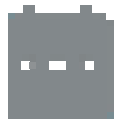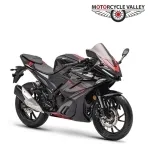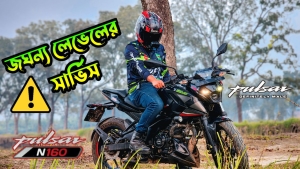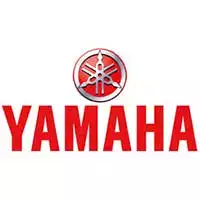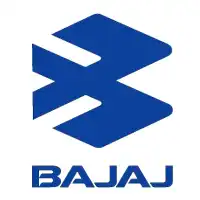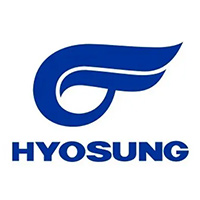Popular Tourist Spots in Chapainawabganj For Bikers
Popular Tourist Spots in Chapainawabganj For Bikers

Chapainawabganj district, known as the capital of mangos, is located in the north-western region of Bangladesh. This district is also known as Barind and Diar region. The mangoes of this place are world famous. It is also a district rich in various historical monuments and archeological sites. As the capital of Gaur, the capital of ancient Bengal, Shibganjupazila has a variety of historical sites and monuments. There are also some establishments of local zamindars in Shivganj during the British period which attract the travel thirsty. This district free from traffic and noise is also quite attractive for bikers. Due to the improved communication system, many people come to this district by bike. Let's take a look at some of the sights of this district.
- Mangoes of Chapainawabganj
- Choto Shona Mosjid
- Tomb of Captain Mohiuddin Jahangir, the greatest martyr
- DarasbariMosjid and Madrasa
- KotwaliDarwaza
- ChamchikaMosjid
- Tahkhana Complex
- Tomb of Shah Neyamatullah
- Tin GombujMosjid
- Babu Dying
- Historic Ali Shahpur Mosque
- SharBuruj
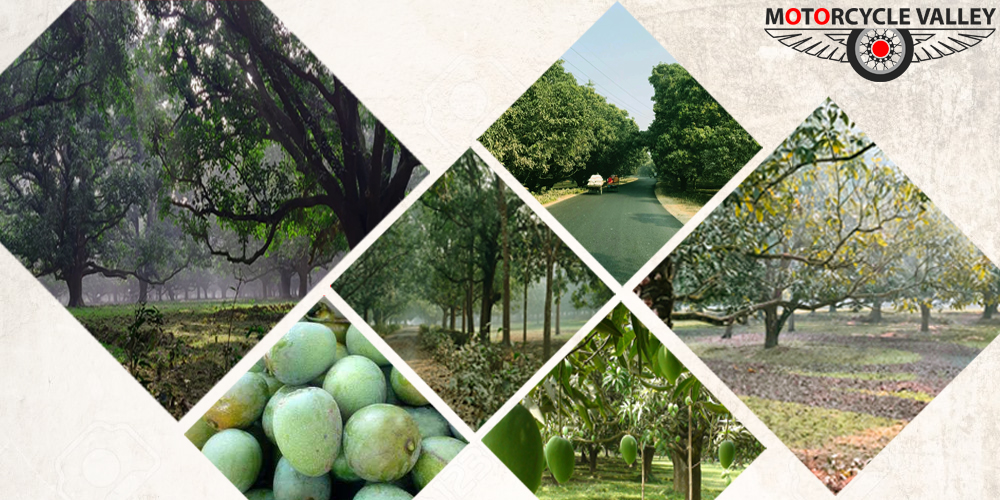
Mangoes of Chapainawabganj:
When it comes to Chapainawabganj district, mango comes first. This district is known as the mango capital of Bangladesh. This summer fruit is the main source of economy in Chapainawabganj. The mangoes of this district are also exported abroad to meet the demand of the country. Most of the lands in Chapainawabganj district are rich in different types of mango trees. Shibganj, Bholahat, Nachol and Gomstapurupazilas produce the most mangoes in Chapainawabganj district. Among the mangoes produced in Chapainawabganj district are Fazli, Langra, Khirshapat, Amrupali, Gopalbhog, Ashwina and Bombay. A mango research center has been set up under the auspices of the government to develop and increase the production of mangoes in this district. It is basically a research center of Bangladesh Agricultural Research Institute. The research center is located next to the Rajshahi-Chapai Highway. It is located in the middle of the city on the right hand side after crossing the bisho Road junction. Chapainawabganj Circuit House is located next to the Mango Research Center. Founded in 1985, the institute conducts all types of mango related research under the Department of Horticulture. The total land area of the Mango Research Center is 30.6 acres or 12.40 hectares. On this land there are orchards, offices, laboratories, residential buildings and about 300 mango trees of 75 varieties. The purpose of this organization is to increase the ethnic development and production of mango through conducting ester research on mango cultivation. The Chief Scientific Officer is the Head of the Center and has 4 more Scientific Officers as his associates. Bikers can visit this place and see the varieties of Mangos and learn about the research institute.

Choto Shona Mosjid:
Choto Shona Mosjidis known as the 'jewel of Sultane architecture'. According to an inscription on the top of the main entrance of this mosque, it is known that the mosque was built by Majlis-E-MajalisMajlis Mansur Wali Muhammad bin Ali. Exact date of construction has been erased from inscription. However, from the mention name of the Sultan AlauddinHussain Shah, it is clear that this mosque was built at some point during his reign (1494-1519). The decoration of the whole mosque is mainly stone, brick, terracotta and tile. Among them stone carving the most of it. The front of the mosque, the towers, the doors, etc., have fine stone carvings, where herbs, roses, hanging chains, bells, etc. are carved. The arches also have stone carvings. From the descriptions of Creighton and Cunningham, it is known that at one time the whole mosque was covered with gold on the outside, except for the domes. The interior of the domes is rich in terracotta. This ancient architecture is located in Shibganjupazila of Chapainawabganj district of Rajshahi division. From the divisional city Rajshahi this place is located 85 kilometers west and located 35 km north of Chapainawabganj. For those who want to go to see this architecture by bike, first you have to take the Rajshahi-Chapai highway. From Rajshahi city you can cross the Court Station junction and Kashiadanga. Then after 28 km front you will findGodagari roundabout. Before you arrive Godagari you will pass through, Kasba, Haripur Bazar, VijaynagarMor, and Rajabari Hat. You must try the first class Sweets which very popular in Gopalpur. After crossing GodagariGolChattar, go straight ahead to Basudebpur Junction and Rajarampur Junction. From there it will go 5 km in front of ChapainawabganjBishwaroad junction. Sonamosjid is 35 km from Biswaroad junction. From the Biswaroad junction, take the PTI Biswaroad on the left hand side and proceed to Shanti Mor, followed by Mahananda Bridge and Bargharia Bazar. This is the way to SonaMosjid. Another name of this road is Nawabganj-Shibganj road. This road will take you at Maharajpur, Ranihati Bazar, Shibganj, Kansat as well. There is a big mango market in Kansat. The ancient architecture is located on the right side of Main Street, just 10 km from Kansat. It is also located half a kilometer southeast of the Tahkhana Complex at the Ferozepur Quarters in Gaur-Lakhnauti, the capital of Bengal, and about three kilometers south of the Sona Masjid land port Zero Point. At present a park has been developed in the premises of SonaMosjid. There is also a dighi to the north of the main mosque, which once had a well decorated ghat built into it.

Tomb of Captain Mohiuddin Jahangir, the greatest martyr
The tomb of Captain Mohiuddin Jahangir is located in the precincts of the historic Sona Mosque. Captain Mohiuddin Jahangir was born in 1949 in the village of Rahimganj in Barisal. He joined the Pakistan Kakul Military Academy on 5 October 1967. After completing his training with devotion, he was commissioned on June 2, 1968. In 1971, when the invading forces were wreaking havoc and brutal oppression on Bangladesh, Captain Mohiuddin Jahangir, a friend of Karakoram's, escaped the sight of the hill border guards, crossed the Sialkot border and reached the Bangladesh border. Martyred Captain Mohiuddin Jahangir was working as the Commander of the Liberation Army in Sector 7 of the Chapainawabganj Border Area of Rajshahi District under the direction of the Independent Bangladesh Army. On 13 December 1971, Captain Mohiuddin Jahangir crossed the river Mahananda and marched towards Nawabganj to destroy the enemy forces. On 14 December, he was destroying impregnable positions to break through the enemy's difficult tactics, when with only one enemy position remaining, this soldier of Bengal was martyred by an enemy bullet in a bunker charge.

Darsbari Mosque and Madrasa
Darsbari is located near Omarpur, between ChotoSonamosjid and Sona Masjid land port Zero Point. Like Sonamosjid, it is also located in Shibganjupazila of Chapainawabganj district. Located only 2.5 km from the small Sonamasjid. Darsbari Mosque Road is on the left hand side after crossing the BGB camp to go to Sonamasjid land port along the highway. Darsbari Mosque is in the middle of this road. The last head of this road has fallen into the Pagla River. The local people call this place 'Darsbari' for generations. This place is currently abandoned. Dars means lesson. A ruin adjacent to the mosque suggests that there was once a madrasa here. According to an Arabic inscription discovered by MunshiElahiBakhsh during historical research (inscription length 11 feet 3 inches, width 2 feet 1 inch), the mosque was established in 1479 AD (884 Hijri) by the order of Sultan Shams Uddin Yusuf Shah. The mosque still has an arch as its identity. The mosque is surrounded by walls and a few stone pillars. This mosque is also a significant example of the masterpieces of early Muslim architecture in Bengal. The Yusuf Shahi inscription in Togra script found here is now preserved in the Kolkata Museum. General Cunningham called it Darsbari or College in his own language. The Indian border is just a few yards away from this historic site.

KotwaliDarwaza:
KotwaliDarwaza is an archway to enter the capital of the ancient city of Gaur. To enter the capital of ancient Gaur, the inhabitants of the southern ‘city suburbs’ had to cross this arch. This was also the south-facing path of the inhabitants of the fort. This arch is 312 feet high and 16 feet wide. The length of the entrance is 17 feet 4 inches. The naming of KotwaliDarwaza is in imitation of the Persian synonym 'Kotwal' of the city police. This city police (Kotwal) was engaged in guarding the southern walls of Gaur city. At present it is almost destroyed. The height of the arch between these entrances is 9.15 m and the width is 5.10 m. To the east and west of this entrance is a perforated wall through which shots, or arrows were fired at the enemy. It had a semicircular tower with a sloping front on both the inside and the outside. At present part of the outer turret can be seen with a huge convex outline with lined holes. The defensive walls on the sides of the towers still exist and extend far to the east and west. The western wall extends to the river, and the eastern wall extends slightly within the Indian border. This wall then re-entered India through Bangladesh. The thick mud walls show how strong the city's defenses were then. The inside and outside of the entrance arches are adorned with carved panels on both sides and hanging motifs inside the panels. Some of these panels still survive. On either side of this arch were two circular houses of 6 feet in diameter. There used to be a sentry guarding with firearms. Both the arches and the reservation were decorated with different types of herbs. This entrance is one of the masterpieces of ancient Muslim architecture. It is believed to be a contemporary architectural monument of Sultan AlauddinKhilji. As a result, this pattern is believed to have been built earlier after 1229 (Hijri 627) AD. This ancient architecture is located in Shibganjupazila of Chapainawabganj district, 35 km north of the district townChapainawabganjand just from the historic Sonamosjid.

Chamchika Mosque:
This mosque is located in Shibganjupazila next to Sonamasjid. Only 4 km from Sonamasjid. After reaching Sonamasjid Zero Point along the highway and walking a short distance along the road on the right hand side, the location of Chamchika Masjid is in the mango orchard. No explanation can be found for naming the Chamchika Mosque. However, it is modeled after the large Chamchika Mosque in present-day India. Like the Darsbari Mosque, it is inlaid with terracotta bricks and carvings. The perimeter of its walls is so thick that in the extreme heat of the month of Chaitra, a cool atmosphere exists inside it. Its main dome is very beautiful. In front of this mosque there is a big dighi called KhanjonDighi with an area of 60 bighas.
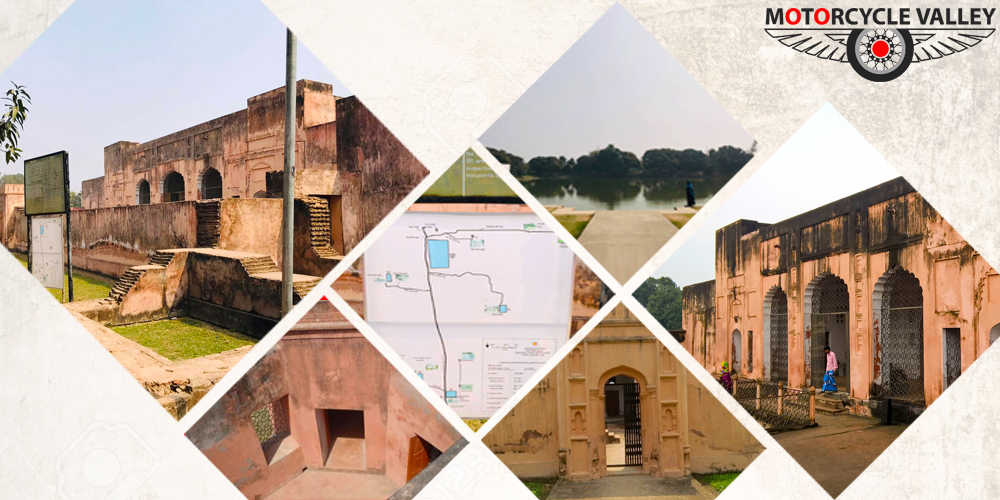
Tohakhana Complex
Tohakhana is a Persian word, which literally means cold building or palace. The building structure on the west bank of a large pond in the Firozpur area of Gaur-Lakhnauti is traditionally known as Tohakhana. About 35 km from Chapainawabganj. The traditional Tohakhana Complex, or Tohakhana is located at Shahbazpur Union in ShibganjUpazila. Less than half a kilometer from the chotoSonamasjid. After crossing Sonamasjid Mango Bazaar along the highway, the road on the left hand side is the road to Tohakhana. If you go to Sonamasjid Mango Bazaar and ask anyone, they can tell you the way to Tahkhana. It is known from historical accounts that its creator was Mughal Subahdar Shah Shuja (1639-1660 AD). Shah Syed built this tohakhana as a heat-controlled building to pay homage to Neyamtullah. Ancient architecture like Gaur is not found anywhere else except in Tohakhana. Its roof and walls are made of concrete. Both the mosque and the Tohakhana are located next to a reservoir called Dafe-ul-Balah. Two paved stairs extend to the bottom of the reservoir. There are two more buildings on the northwest side of the main palace. The nearest of these is a mosque with three domes and the other is a domed tomb with a paved verandah. The buildings were set up around the same time with a specific goal in mind and together they can be considered as a complex. The building is basically made of brick. However, black stone has been used for the door frame and wooden beams for the flat roof. The building may look like a one-storey building from the west, but it looks like a two-storey building from the east. The tunnels created from the houses have expanded and established direct contact with the reservoir. To the west of the building is a hammam (bathroom) with an octagonal pump for water supply. The palace is basically plastered and beautified in the style of Mughal architecture. Inside the Tohakhana complex, there are many unmarked tombs and their identities are not yet known. However, they are considered to be the servants or companions of Hazrat Shah Syed Neyamatullah.
 Tomb of Shah Neyamatullah and three domed mosque
Tomb of Shah Neyamatullah and three domed mosqueHazrat Shah Neyamatullah'sMazar Sharif is located in the Tohakhana Complex area of Shibganjupazila. His tomb is a quadrangular domed building with a bar door standing on a high vet on the north side of the Tohakhana Complex. The mausoleum is 49 feet wide on each side and the middle chamber is 21 feet square in Surrey. The shrine is called Barduari as there are three entrances on each wall. The main room is surrounded by a verandah. A door exists around the main shrine room. All the doors carry the load of the arched main chamber wall vault dome. The script here is an Arabic script of the HussainShahi era. It was later installed. There are graves of a few more devotees and members of his family in this tomb. The tomb of Hazrat Shah Neyamatullah is adorned with trees and surrounded by a brick wall. Every day many people visit his shrine. The first Muharram is known as the day of birth and death of Hazrat Shah Neyamatullah. On this day ‘Uros is celebrated here every year. Also another Uros is celebrated here on the last Friday of the month of Bhadra. Most people gather here on this day.

Three-domed mosque:
The three-domed mosque associated with the tomb of Shah Neyamatullah (RA) at ShibganjUpazilaFirozpur is a prominent monument of the Mughal period. It is a mosque belonging to Hazrat Shah Neyamatullah'sMazar Sharif located in Tohakhana Complex. It has 3 entrances and 3 arches inside. There is no significant artwork inside or outside the mosque. There are a few shelves on the wall. The local people regularly offer prayers in this mosque. The two-storied building erected by Sultan Shah Shuja on the south side adjacent to this mosque is another notable monument of the Mughal period. The brick building is famous as Tohakhana. It is said that Sultan Shah Shuja of Bengal built this building for the purpose of winter residence for his MorshedHazrat Shah Neyamatullah (reigned 1639-58 AD) as a winter control building at Ferozpur. This is one of the ancient monuments of Gaur. The lake near the mentioned mosque and Tohakhanais located on the banks of DafeulBalahar. From these two buildings two steps extend to the bottom of the lake. The scenery of these two buildings from the east is very beautiful.

Babu Dying
ChapainawabganjSadarUpazilaJhilim Union's natural beauty picnic spot is names Babu dying. Its distance from Chapainawabganj district is 10 km. Babu dying is the only source of entertainment for about 1.5 million residents of the border district of Chapainawabganj. Babu Dying's name comes up whenever there is a conversation about some leisure time in busy life. The government has hundreds of acres of khas ledger here. Hundreds of tourists from different parts of the country come here to see this beautiful scenery as there are multiple hills and natural springs on this land. Here is a combination of many trees of different species, big and small. Tourists are overwhelmed by what they see. Indigenous people live in some hills. There is an opportunity to develop an excellent tourist center centered on Babu Dying. Recently, the Bangladesh Army is planning to build a cantonment in Babu Dying area. Babu Dying is very easy to get on the bike. Before entering the district town of Chapainawabganjyou can to go to Babu Dying, take the Rajshahi-Chapai Highway from Raja Rampur mor to the right hand side of Shehala Para. Babu Dying is 6 km from Raja Rampur Junction. On the way from ChapaiNawabganj city to Rajshahi, take the road on the left hand side from Raja Rampur mor.JeenPuri, Pal Para, Hosendanga Primary School will fall on this road. Then go a little further to the Babu Dying Picnic Spot. There is a small road on the right from this turn. This is the way to go to Babu Dying.

Historic Ali Shahpur Mosque
The historic Ali Shahpur Mosque is an ancient mosque about 500 years old. The mosque has one dome. The width of the wall of this mosque is 3 feet. It is 42 inches wide with a wall to keep it intact. There are 4 towers in the four corners of the mosque. There is a minaret at the top of the dome. There is an arched door in the east wall of this mosque. On either side of this door are two doors decorated with east ornaments. On closer inspection, it would seem that the doors are decorated with two wooden and various designs, which seem to have been closed recently. But in reality all the ornaments on the door are brick and permanently closed. The mosque is built of Gaudiya brick. The foundation, walls and dome of the mosque are placed above the arch. The inside of the mosque and the dome have various designs. The exterior walls of the mosque have a variety of melon designs. Who built this historic mosque during whose time or who built it is estimated from the architectural indications of the mosque at that time. Although the exact history of this mosque is not known, everyone thinks that it is 5 to 600 years old by looking at the antiquities of the mosque. Some people think that 7/8 hundred years ago a religious person named Alisha came to this area to preach the religion and built this mosque in this village. And for this reason the village was named Ali Shahpur after him. This ancient mosque is located in Ali Shahpur village of FatehpurYuin in Nacholupazila of Chapainawabganj. The mosque is located in a remote area about 10 km west of NacholUpazilaSadar. To visit this mosque you have to resort to Chapai-Gomstapur Highway. The Chapai-Gomstapur Highway is the road that runs west from the fire service junction of ChapaiNawabganj district town along the banks of the river Mahananda. First on this street you will find Hearty Culture Center, Nayagola Bazar, and Police Line. Then Fatehpur Bazar through Balugram turn.
Going a little ahead of Fatehpur Bazar, Khulsi-Munshi Bazar bus stop. Khulsi-Nachol Road on the right hand side from here. Ali Shahpur Mosque is only 8 km from this road. It only takes 20 minutes to go by bike. This road will have some twists and turns. However, anyone can tell the way to Ali Shahpur. This is the nearest and easiest road to reach Ali Shahpur. According to the locals, before independence, the mosque was surrounded by forests. At that time no one used it as a mosque. After independence, Rasul Mia, 65, renovated the mosque and was the first to offer Friday prayers with his sons. Later the mosque was further renovated and expanded permanently. At present it is being used as the Jame Mosque of the village.

Sharburuj:
Sharburuj or NaodaBuruj is located at Rahanpur in Gomstapurupazila, bordering Chapainawabganj district. Locally it is also known as the Sharburuj. During the reign of Raja LakshmanSen, Rahanpur gained popularity as a trading city. For commercial reasons he built a picturesque building in Rahanpur, of which the mosque is the chief. The real name of this dilapidated building is Shahburuj. The word shah means king and the word buruj means building or balakhana. Which later became popularly known as the Sharburuj. The Bengali conqueror Ikhtiyar Uddin Muhammad bin BakhtiyarKhalji arrived in Bengal on this route and stayed there for some time. The Nadia region, known for its history, is located next to the area of these installations. Which later came to be known as Naoda. Frightened by the news of the arrival of BakhtiyarKhalji, Raja LakshmanSen fled from this place by river. Since then it is also known as NaodaBuruj. Today, on the verge of extinction, this traditional monument can be transformed into a full-fledged entertainment village with government or private patronage. This traditional monument is located at Rahanpur, a trading center, 26 miles west of the district town of ChapaiNawabganj. To reach Rahanpur you have to take the Chapai-Gomstapur Highway. The Chapai-Gomstapur Highway is the road that goes west from the fire service junction of ChapaiNawabganj district town along the banks of the river Mahananda. First on this street you will find Hearty Culture Center, Nayagola Bazar, and Police Line. Then Fatehpur Bazar through Balugram turn. Gomstapur Bazar is 10 km from here. After crossing Gomstapur Mango Bazaar, 6 km ahead is Rahonpur Railway Station. The Rahanpur railway station market is quite interesting to see. Just a kilometer north of Rahanpur railway station, a high mound can be seen. This is the Sharburujor nooda tower. If you ask anyone at Rahanpur Railway Station Bazaar, they will be able to tell you the way to NaodaBuruj.
Note: All the places of interest mentioned are very old and all the places are worth visiting, but some places you may not like, because there is a high probability of wasting a lot of time on zigzag roadsof the villages. But if you are going out for the purpose of feeling nature then it’s totally worth it. It is good to remember that since it is a rural environment, it is advisable to have all kinds of arrangements as per one's needs. Special needs to be kept are food and water.
The above mentioned travel guide is basically put together according to the road that enters ChapaiNawabganj via Rajshahi, but after reaching ChapaiNawabganj, you have to make plan riders like yourself from there, where you want to go first. All the places are at a close distance, and after reaching ChapaiNawabganj, they are in a circle of 60-70 km in total.
Is this tips helpful?
Rate count: 2Ratings:

New Added Bikes
Bike Tips
Rust in bike fuel tanks is a common problem, especially in humid climates or when the bike is not used for a long time. Detailed...
English BanglaThe ECU, or Engine Control Unit, is an electronic device that controls and manages various engine functions of a motorcycle. It ...
English BanglaOne of the most in-demand features in modern motorcycles is the Slipper Clutch.A Slipper Clutch is a special type of clutch syst...
English BanglaDue to ongoing heavy rainfall, floods, and water logging in various parts of the country, there is a significant risk of water...
English BanglaIf you ride a bike, regular maintenance is a must—but during the monsoon, it requires extra care and attention. Rain, mud, a...
English Bangla



